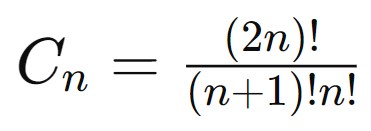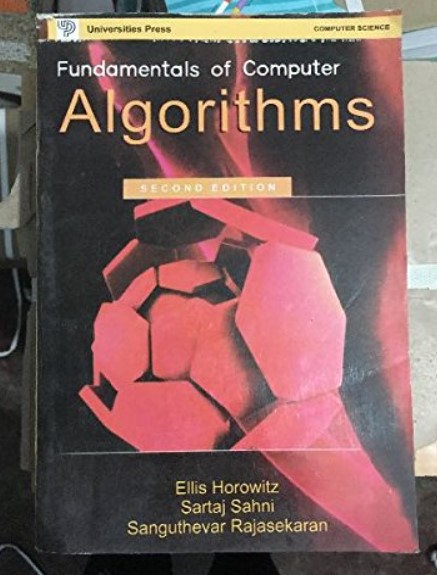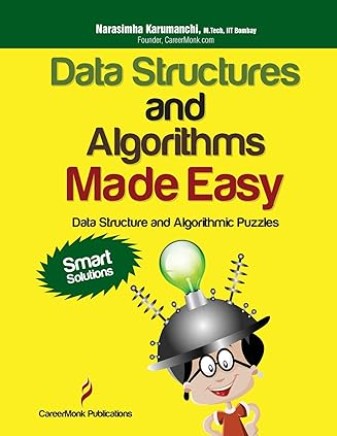Catalan Number
.
The Catalan number plays a significant role in the Matrix Chain Multiplication problem, particularly when discussing the number of ways to parenthesize a product of matrices.
.
Catalan numbers are a sequence of natural numbers that have many applications in combinatorial mathematics. They appear in various counting problems, often involving recursive structures.
.
History
The sequence of numbers was named after the Belgian mathematician Eugène Charles Catalan (1814 – 1894), who first introduced them in the 19th century. Catalan’s work focused on counting the number of ways to divide polygons into triangles, which is a classic example of a problem involving Catalan numbers.
Catalan first described the sequence while studying various combinatorial problems, including the number of rooted binary trees and the number of ways to parenthesize products. His work included defining the numbers and providing their combinatorial interpretations.
The nth Catalan number can be found using the formula

.
Or equivalently:

Here are the first few Catalan numbers:
- C0 = 1
- C1 = 1
- C2 = 2
- C3 = 5
- C4 = 14
- C5 = 42
.
Applications of Catalan Numbers
- Binary Trees – The number of binary trees with n nodes are a Catalan number.
- Parenthesizations – The number of ways to correctly match parentheses in an expression with n pairs of parentheses is a Catalan number.
- Lattice Paths – The number of paths along the edges of a grid that do not pass above the diagonal is a Catalan number.
- Polygon Triangulation – The number of ways to divide a polygon with n+2 sides into triangles using non-crossing diagonals are a Catalan number.
Catalan numbers arise in many other areas, making them an important sequence in mathematics. It is also related to matrix chain multiplication, specifically in counting the number of ways to fully parenthesize a product of n+1 matrices.
.
- Matrix Chain Multiplication Problem – The problem involves finding the most efficient way to parenthesize a product of matrices to minimize the number of scalar multiplications.
- Catalan Numbers – Catalan numbers are a sequence of natural numbers that have found applications in various combinatorial mathematics problems. They appear in contexts such as counting the number of ways to correctly parenthesize expressions, counting the number of rooted binary trees with a given number of nodes, and more.
For example, with 3 matrices, there are 2 ways to parenthesize them, which corresponds to the 2nd Catalan number.
.
Working
To determine the number of ways to parenthesize the product of 7 matrices A1*A2*A3*A4*A5*A6*A7, we need the 6th Catalan number, since we have 6 multiplication operations (which correspond to 6 ways of parenthesizing the chain of 7 matrices).
The 6th Catalan number C6 is calculated as follows –
C6 = (2⋅6)! / (6+1)!6! = 12! / 7!6!
So,
C6 = 132
Therefore, there are 132 different ways to parenthesize the product of 7 matrices.
.
Example of Parenthesizing
Here are a few examples of how you might parenthesize the product of 7 matrices
- ((((A1A2)A3)A4)A5)A6)A7
- (A1(A2(A3(A4(A5(A6A7))))))
- (A1(A2((A3A4)(A5(A6A7)))))
- (A1((A2A3)(A4(A5(A6A7)))))
- ((A1A2)((A3A4)(A5(A6A7))))
These are just a few of the 132 possible ways to parenthesize the product. Each distinct parenthesizing corresponds to a different way to group the matrices for multiplication.
.
Time Complexity
For calculating Catalan numbers using dynamic programming, the time complexity is O(n2), where n is the index of the Catalan number you want to compute.
.
Space Complexity
For calculating Catalan numbers using dynamic programming, the space complexity is O(n), where n is the index of the Catalan number you want to compute.
.
Advantage
Efficient Calculation – Using dynamic programming to calculate Catalan numbers reduces the time complexity to O(n2), making it feasible to compute for reasonably large values of n compared to a naive recursive approach.
Precomputation – Once the Catalan numbers are computed up to a certain index, they can be reused to solve various combinatorial problems efficiently, without needing recalculation.
Combinatorial Insights – Catalan numbers provide solutions to many combinatorial problems, such as counting valid parentheses combinations or binary trees. Precomputing these numbers facilitates quick access to solutions for such problems.
Test Yourself
Q1- What is the significance of Catalan numbers in combinatorial mathematics?
Catalan numbers play a crucial role in combinatorial mathematics as they count the number of ways to solve various problems involving recursive structures. They are used to count valid parenthesizations of expressions, the number of rooted binary trees, paths in grids, and ways to triangulate polygons, among other problems.
Q2- Explain how Catalan numbers are related to the matrix chain multiplication problem.
In matrix chain multiplication, Catalan numbers represent the number of ways to parenthesize a product of matrices.
For a sequence of n matrices, the number of possible parenthesizations corresponds to the (n−1)th Catalan number. This is useful for understanding the complexity of the problem and the number of different ways to group matrices.
Q3- Why are Catalan numbers considered important in the study of binary trees?
Catalan numbers are important in the study of binary trees because they count the number of distinct binary trees that can be formed with a given number of nodes. This helps in understanding tree structures and optimizing operations involving binary trees.
Q4- Explain the relationship between Catalan numbers and polygon triangulation.
Catalan numbers count the number of ways to divide a polygon with n+2 sides into triangles using non-crossing diagonals. This application highlights the usefulness of Catalan numbers in combinatorial geometry and partitioning problems.
Q5- How do Catalan numbers contribute to understanding lattice paths in combinatorial problems?
Catalan numbers count the number of paths from the origin to a point (n, n) on a grid that do not pass above the line y=x. This application is crucial in problems involving path counting and grid-based constraints.
Q6- What is the formula for the nth Catalan number?
n!/(n+1)!
(2n)!/(n+1)!n!
2n!/n!
n!/n!
Ans – (2)
Explanation – This formula correctly calculates the nth Catalan number.
Q7- Which of the following problems is not related to Catalan numbers?
Counting valid parentheses combinations
Counting rooted binary trees
Finding the shortest path in a graph
Counting ways to triangulate a polygon
Ans – (3)
Explanation – Catalan numbers are not used for shortest path problems but are used for counting combinatorial structures.
Q8- How many distinct ways are there to parenthesize a product of 4 matrices?
2
5
14
42
Ans – (2)
Explanation – The number of ways to parenthesize 4 matrices corresponds to the 3rd Catalan number, which is 5.
Q9- Which sequence is correctly ordered according to Catalan numbers?
1, 2, 5, 14, 42
1, 1, 2, 5, 14
1, 1, 2, 14, 42
1, 2, 2, 5, 14
Ans – (2)
Explanation – This sequence correctly represents the first few Catalan numbers.
Q10- What does the 4th Catalan number represent in terms of polygon triangulation?
Number of ways to triangulate a polygon with 5 sides
Number of ways to triangulate a polygon with 6 sides
Number of ways to triangulate a polygon with 7 sides
Number of ways to triangulate a polygon with 8 sides
Ans – (2)
Explanation – The 4th Catalan number counts the ways to triangulate a polygon with 6 sides.
Q11- In the context of matrix chain multiplication, what does the 6th Catalan number represent?
Number of ways to parenthesize a product of 6 matrices
Number of ways to parenthesize a product of 7 matrices
Number of ways to parenthesize a product of 5 matrices
Number of ways to parenthesize a product of 8 matrices
Ans – (2)
Explanation – For 7 matrices, the corresponding Catalan number is C6.






